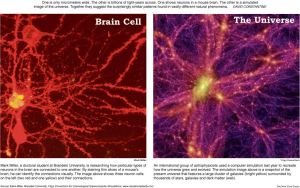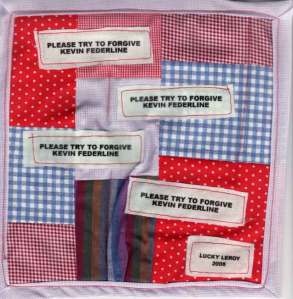Don’t mind but there is a mind on the other end of the line… by Ankur Dnyanmote
Posted: October 28, 2011 Filed under: Frequently asked questions Leave a commentA little story based on true experience:
Just received a phone call for the umpteenth time from some telemarketer for Home Security Alarm Systems.
I reminded him for the umpteenth time that I was not interested and that I had already requested for my name to be deleted from their database.
He still continued… “would you be interested in installing a free home security….”
I interrupted, “Are you even listening man?… Is this a machine?”, I asked.
“Do I sound that bad?”, he responded.
To which I broke into the following rant:
“Yes. It sounds THAT bad. You sound like a very well-trained modern computer. That’s how severely you have been programmed by whichever corporate engine operates you as its advertising mouth. You are just blindly going by a script as you make your cold calls and tick a check-mark on some inundated database on the computer… feeding its binary appetite with your ironically aped compliance, while some invisible master pulls on your clueless strings. You don’t even listen to me man…. that’s how obviously oblivious you are of the person on the other end of the phone – your CUSTOMER. Yeah, its that bad man. You sound like a freakin algorithm. WHERE is the human being? I want to talk to a human being…”
He was silent for a second before he said, “I’m sorry sir”, and then he asked again… “I sounded thatbad huh?”
I was naturally surprised that he was still listening. So I continued, “Well, somewhere in all this obsessive drive to sell and outsell, the target audience – the customer – has been carelessly trivialized. Mindlessly, the mind has been forgotten from the whole picture. How can you make a pitch if you cannot even appreciate that the person on the other end of the line is a live human being who needsto be listened to and talked to like a person? How is that person supposed to make a spontaneously authentic decision about your service, product, or idea, if you don’t even communicate it all like a human being?”
He gently said, “I agree and I understand sir.”
“Don’t call me sir man”, I replied. “Just think about it and see if you can do better than this! Perhaps you will find more meaning in your work. Anyway, that’s my pitch to you ! I have to go now. You have a good day”
He chuckled and said, “Thank you very much. A good day to you too!”
I hung up and wondered if he bought it…
Alarmingly, I also wondered about my home’s security.
Occupy Wall Street: Relevant or more of the same?
Posted: October 26, 2011 Filed under: Frequently asked questions Leave a commentBy T. Moreno
The “Occupy Wall Street” movement has spread from it’s initial New York City location, to a few left-coast cities, to a nationwide, and now world-wide phenomena. While the overall numbers of protestors in each of the cities in no way matches the numbers found at previous large-scale protests, in both this nation and elsewhere, there is a groundswell of support from a wide range of people. The fact that it is occurring in locations world-wide is enough for all to take notice.
It would be wrong to paint, as some have, members of this movement with a broad brush – labeling them as a mob of dirty, lazy, hippy trustafarian types, though there are plenty of those in attendance. It would also be wrong as well to portray them as a simply a bunch of extreme leftists, bent on replacing the Bull and Bear with the Hammer and Sickle. Broad characterizations are unfair and inaccurate. They aren’t all Bolsheviks, foaming at the mouth to line up class enemies and shoot them en mass, though there certainly are a few of those totalitarian types mingled with the masses. For the most part they are young, middle class, white college-age kids – college-age being the period in one’s life when one is often drawn to causes larger and “better” than one’s self.
Some observations concerning the growth of “Occupy” movement come to mind.
People of all political stripes are justly angry about the state of the nation. There is a growing sense that this “Great Recession” with economic recovery retreating like some mirage into the near future – always close, but never within reach – is destroying what chances these (mostly young) Americans have for a future and older Americans have for a pleasant retirement. But, so far the anger has not coalesced into clear and legitimate goals. Slogans of “eat the rich” and making the rich “pay their fair share” get the crowds worked up, but don’t represent concrete solutions to the nation’s ills.
Throwing Wall Street big wigs in jail for imaginary crimes may sound cool, but it isn’t going to happen. Why? Because making a profit is not a crime. If someone has evidence a law was broken, feel free to contact the Securities and Exchange Commission. That’s not to say the Wall Street fat cats are paragons of virtue. They’re not. But this isn’t 1930s Soviet Russia. Anyone who is seriously advocating the “liquidation of kulaks needs to take a seat and chill.
There are indeed marxist elements attempting to gain from the occupy movement. They are there. Not all of them are wearing Che shirts because they think he was cool. They wear them, fly the red flag and hand out pamphlets with the same tired drivel about “each according to his ability – each according to his needs” because they are believers in the religion of Marxist/Leninist thought. ” Funny how marxism, does not instill the same horror as national socialism would. Interestingly enough, the neo-nazis and anti-semites have started to crawl out of the woodwork, join the protests and decry the “Jewish bankers” of capitalist finance.
The consensus style approach to meetings among the occupy movement is rather…..creepy. The video footage, multiple clips at multiple locations, of a lone speaker vocalizing a few words to be immediately parroted by those in attendance, is Orwellian (or worse, Maoist) in sound and appearance. It smacks of brainwashing, not a free exchange of ideas. It is the shrill expectation of acceptance of the group thought at the expense of the individual.
The protesters decry capitalism and the big banks. But, it wasn’t capitalism that bailed out the banks – it was the federal government. Socialism – not free market. That fact should be an important one. Rightly or wrongly, true capitalism would have let the banks and the automakers fail.
A big part of the anger is directed at loopholes that allow corporations and wealthy individuals of all political persuasions to dodge their tax bill. Tea partiers and Occupiers may not see eye to eye on the role of government, or progressive versus flat tax, but most agree that loopholes should be closed. It’s a starting point at least to bridge the political divide.
Capitalism isn’t going down in a flaming “workers of the world unite!” revolution. To be taken seriously and not join the long list of previous, and largely forgotten, populist movements, the occupy movement needs to find focus, avoid “direct action” activities that simply make them look like a frothing Jacobin mob. The sympathy of the nation as a whole will side towards the powers the protesters decry if they resort to window smashing (which they have not) or disruption of city services and freedom of movement for others (which they have).
Want to have a revolution? The Tea Party had theirs in 2010. Express your demands and then get to work fielding the candidates who can translate those demands into legislative policy.
Tom Waits ‘Bad as Me’ – First Listen NPR
Posted: October 26, 2011 Filed under: Frequently asked questions Leave a commentTom Waits, ‘Bad as Me’ – First Listen NPR
http://www.npr.org/2011/10/23/141565981/first-listen-tom-waits-bad-as-me
Network Connectivity
Posted: October 25, 2011 Filed under: Frequently asked questions Leave a commentby Ankur V. Dnyanmote PhD
“A dream you dream alone is only a dream. A dream you dream together is reality.”
― John Lennon
“Invisible threads are the strongest ties”
― Friedrich Nietzsche
It’s all connected. It’s all alive….
Networks are everywhere. It is not unreasonable to call them ubiquitous. One may even call them omnipresent, but that may be pushing it. After all, how does one prove that ‘it’ is all connected? Fortunately, the evidence for this claim is more than adequate.
Networks are persistent motifs in the theme of our modern lives. Most of the world today is connected in one way or the other. The internet represents a sort of substratum for this most connected moment in the history of mankind. And it is a very recent development too – about 50 years or so in the making. Of course the invention of the computer was an indispensable precondition for the emergence of this World Wide Web. After all without nodes there cannot be a network.
The prevalence of this theme of connectivity extends infinitely through nature, like a fractal, which is a geometric phenomenon of great beauty. A fractal such as the Mandelbrot’s plot transcends its own structure due to the endless reiterations of a surprisingly simple equation. Similarly, networks beget more networks as the pattern of connectivity evolves into increasing complexity. It is therefore no surprise that the evolution of the internet is lately characterized by the emergence of social networks. Since ‘man is a social animal’ a manmade network is bound to be a social network.
Most of us today are part of some kind of a network or another. Remember when you first started using email? You had already become part of a network at that point in time when you created your first account – hotmale@hotmail.com. Who knew it was going to become increasingly associated as your ‘handle’ in the years to come. Well, the future has somehow arrived. And this realization brings forth a crucial aspect of networks – communication.
Today, we are all communicating with each other significantly more than we ever have in the history of humanity. It is the same theme again – like a fractal through time. Think about it; the Gutenberg press in the early 1500s revolutionized the communication of knowledge by setting off the assembly-line proliferation of printed information. Four hundred years later the internet amplified that communication a zillion fold if not more. Imagine that an alien species from outer space was measuring inter-human communication on our planet in the form of some emitted signal. They would certainly notice a huge spike of signal intensity in the 21st century – a crescendo like peak in connectivity. Thousands of years of recorded data and then suddenly, in the 21st century this walking ape started talking remarkably more than it did just a 100 years ago! For them (the aliens) it would almost be like watching a baby suddenly begin to start forming complex sentences as it grows from a toddler to a regular talker.
All these thought experiments certainly establish that the inter-connectivity amongst human beings all over the globe has dramatically increased due to the recent emergence of the internet. As we plug into the information matrix through our computers we become aware of the ambient nature of our very being. “It’s all connected” is no more a cliché.
Incidentally, it never has been.
Observe the pictures in Figure 1.
Figure 1
On the left side is a picture of the internet backbone showing the routing patterns of information, while on the right side is a representation of a protein-network in a typical living cell. Both these representations are simplified conceptualizations of ‘information flow’ – statistical representation of the real networks so to speak. However, these network diagrams coincide with each other very impressively – intriguingly impressive.
On a deeper level, very interesting connections begin to emerge between these two distinct types of networks. Here is a symbolic way of looking at it:-
- The internet is a network of computers operated by human beings.
- A human being is a composite of about 10 trillion interconnected cells.
- A single cell is made of countless protein networks such as shown in Fig.1.
Networks within networks, so to speak.
Such patterns of inter-resemblance as shown in Figure 1 are not uncommon. A few years ago, I came across this picture on the internet (Figure 2).
Figure 2
It is a comparison between the networks of a brain cell (left) and a network of galaxies and stars (right). The topological similarity is strikingly enigmatic.
William Blake wrote, “To see a world in a grain of sand, and a heaven in a wild flower,
Hold infinity in the palm of your hand, and eternity in an hour.”
As we communicate with each other through our social networks we become increasingly aware of our own humanity – the inter-connectivity of our similarities and differences. As we visit various WebPages and consume information, our collective consciousness becomes more and more aware of our identity as interconnected human beings – a web within the web of life. Like through a kaleidoscope we view countless different perspectives, appreciate variegated world views, and empathize with other cultures that are foreign to us, as we surf the vast ocean of information on The Web. And even though we may sense that technology is making us more and more alienated, it is unequivocally true that at no other point in history have so many different types of human beings been able to connect with each other so easily. We want to Tweet the most mundane details of our lives, share random thoughts as our status updates on Facebook, and express opinions about other peoples broadcasts of their own expressions on YouTube. We really seem to want to connect and communicate with each other.
Strange as it may seem to some, one really cannot ignore this increasing proclivity to share information with each other. Perhaps, this heralds a new stage in the evolution of human communication. Beyond a doubt it appears that networks and connectivity are innate qualities of nature. And we humans are no different.
As is true of any era – we do live in interesting times.
Missouri State Bird
Posted: October 21, 2011 Filed under: Frequently asked questions Leave a commentMissouri State Flower
Posted: October 17, 2011 Filed under: Frequently asked questions Leave a commentWeekly Quilt of the Month
Posted: October 17, 2011 Filed under: Frequently asked questions Leave a commentGet Comfortable
Posted: October 15, 2011 Filed under: Frequently asked questions 1 CommentWelcome to ScissorSmile.com.
Featured commentary and opinion by special guest authors.
http://www.tomwaits.com/news/ – New album out Tuesday! Listen to the new track on his website.





